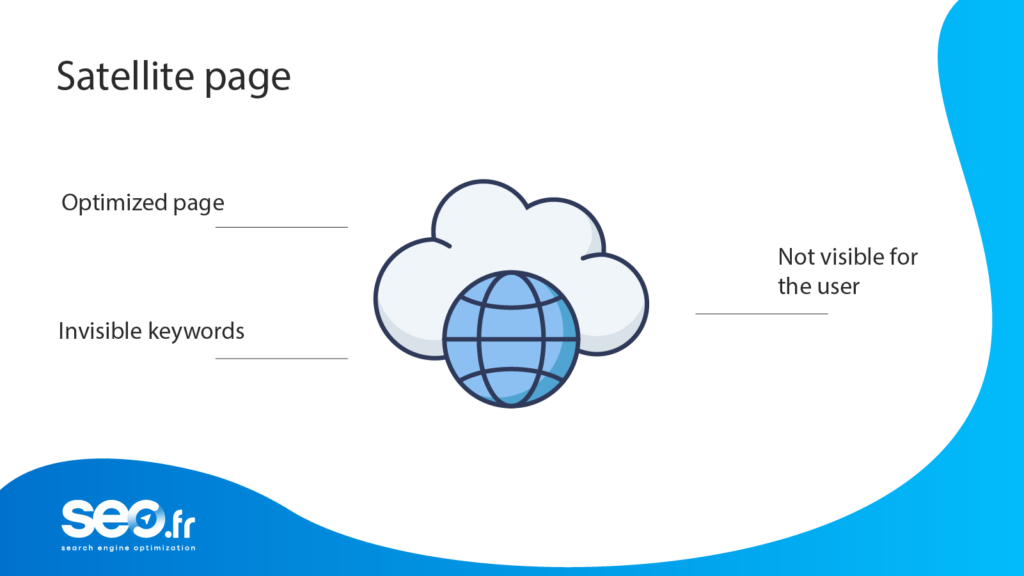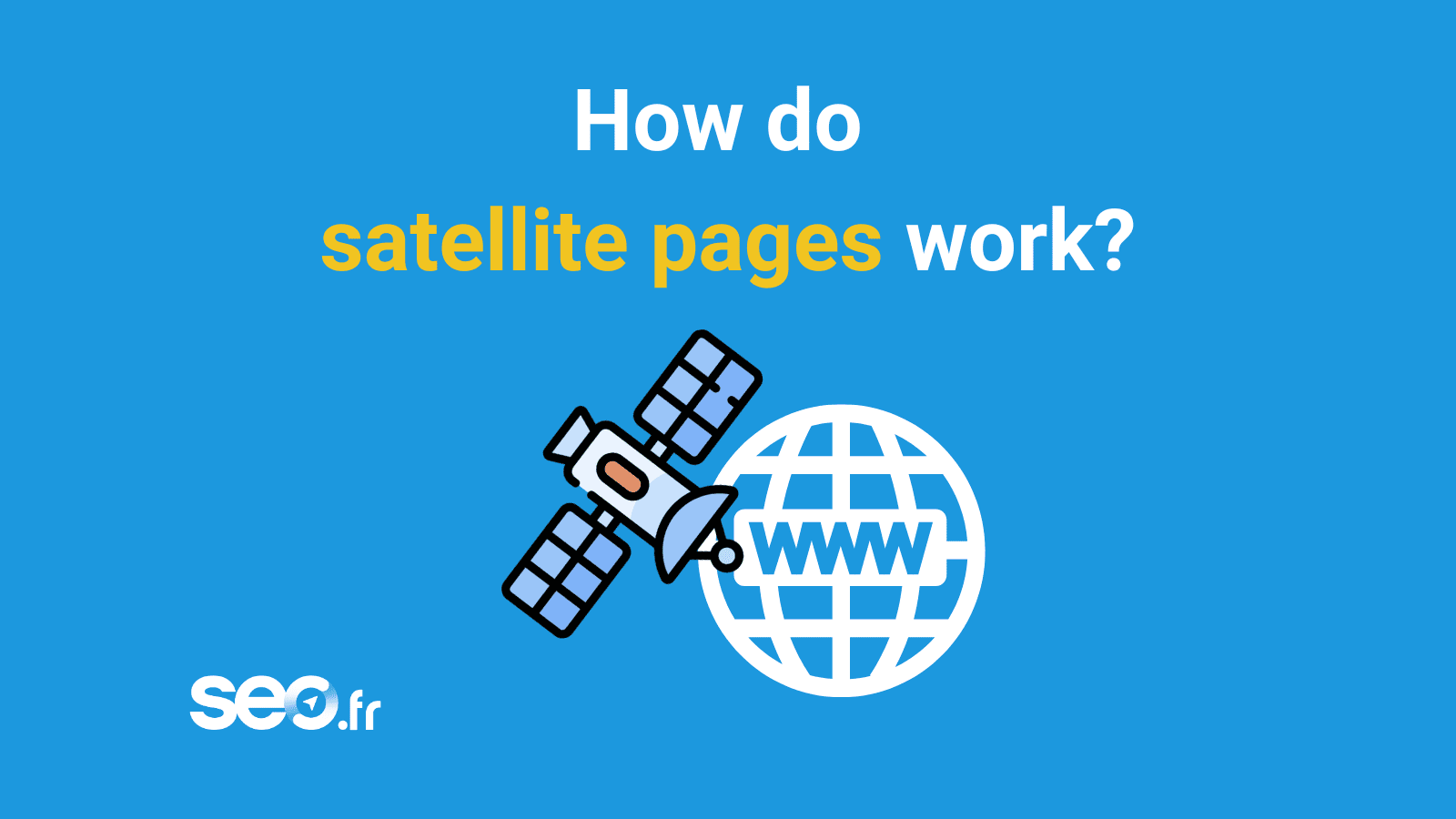Satellite pages are pages that are generally invisible to Internet users. Their purpose is to present search engines with optimised pages in order to “artificially” increase the relevance of a site on certain expressions. Alias pages are a variant of satellite pages.
In a nutshell…
The creation of satellite pages can be motivated by several more or less “honest” reasons:
- A site made up almost entirely of images or videos will not be indexed by search engines (they are, at present, unable to interpret an image and give it a description). If, for some reason, you don’t want to add visible text to your pages, the satellite page technique can allow you to associate a page of invisible text with each of your photo pages. That said, alt attributes will allow you to achieve the same result in a much cleaner way.
- Some web designers do not want certain words to appear on their pages (for reasons of cultural, religious, commercial or political taboos) but would like to be found by people searching for these terms. A satellite page can allow them to associate an invisible page with the taboo words with the page on their site related to those words. In any case, there is no “honest” technique for practising the language of the word. Only cloaking and invisible text can replace satellite pages.
- When a “badly designed” site is entrusted to an SEO company, it is not uncommon for them to choose to use alias or satellite pages to deal with the following problems:
- Vocabulary is too limited: the site uses the same terms over and over again to talk about the same things. It will not be indexed for all the synonyms of the words used. Satellite pages will allow these synonyms to be associated with the site’s pages
- Code that is too heavy, likely to generate interpretation errors and be rejected by the engines
- Text included inside a Javascript, Flash or DHTML code, which the engines cannot read
- For several years, satellite pages were used almost systematically by companies specialising in SEO. The heavy penalties applied more and more frequently by Google to sites optimised in this way now tend to make this technique disappear.
- Deliberate cheating is also one of the reasons why some webmasters create satellite pages. For example, one might want to be found in searches for a competitor’s name (which is absolutely illegal). We have also seen sites with complete copies of pages from competing sites used as satellite pages!

Définition
Gilbert, administrator of the Webmaster Hub site, proposes the following definition for a satellite page:
- A sat page is a page optimised for one or more keywords and which redirects to content adapted to that keyword (often on the home page).
- A sat page is not visible to the user.
- A sat page is used when there is no way to alter the normal source code of the destination page.
- A sat page uses a javascript redirection …
- A sat page is used for keywords not present in the site when the site should respond to that keyword.
- A sat page is used to bypass a technical SEO problem.
In detail…
Alias and Satellite, how does it work?
- Alias” pages are pages that take over the content and presentation of a site’s pages while improving their code to facilitate indexing. For example, they will include optimised tags or translate text originally contained in Flash code into HTML. These pages are usually placed on the same site as the original pages. They do not have visible inbound links, so they cannot be accessed through the normal site navigation. They do, however, have at least one outgoing link to one of the normal pages on the site.
- Satellite pages contain text that is fully optimised for SEO and has little to do with the text on the original page. This text usually consists of a mechanical repetition of the terms and synonyms of the terms on which one wishes to obtain a good ranking. Satellite pages do not necessarily appear on the site they are supposed to promote. They contain an automatic redirect that sends the visitor to the “visible” page without him even noticing. The result is very similar to cloaking. A few years ago, a simple “refresh” meta tag made it possible to manage this redirection effectively. Today, this technique is ineffective. It is generally replaced by a JavaScript redirect. However, several sites using satellite pages redirected in JavaScript have recently been penalised by Google, while others are still at the top of the rankings.
- This technique will obviously not work for users who have disabled javascript execution in their browser.
Got an SEO question?
Julia can help
8 years of SEO expertise

The future of satellite pages
Given the stubborn battle that Google is waging against this type of technique, the risk incurred by webmasters who use them is increasingly important. The technical mastery required to implement them is also more sophisticated and requires an increasing investment of time.
This raises serious questions about the value of these techniques today.









